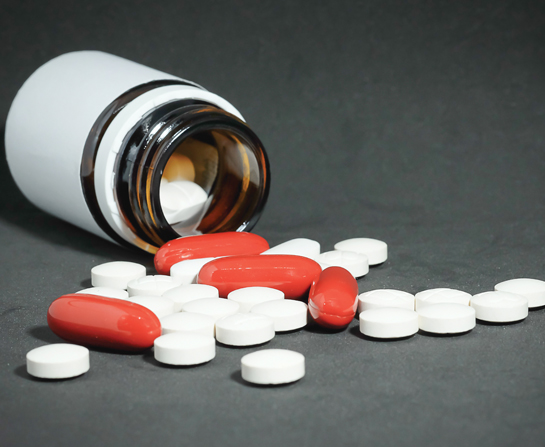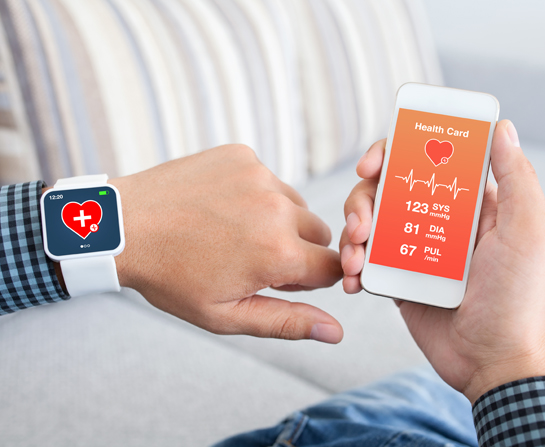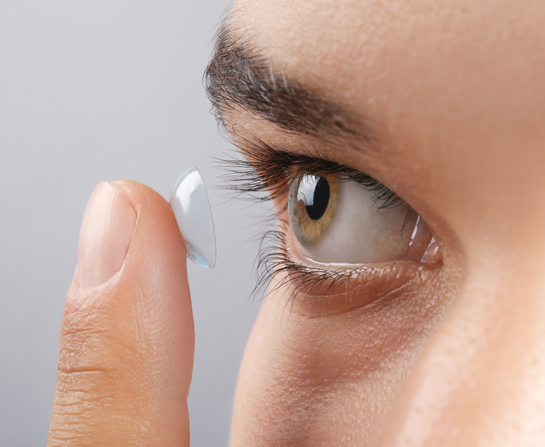When NSAIDs cause pain
April 29, 2022 Return

Words Lim Teck Choon
|
Dr Chieng Jin Yu Consultant Physician, Gastroenterologist & Hepatologist Pantai Hospital Ampang |
Non-steroidal anti-inflammatory drugs (NSAIDs) are a group of medications that can help reduce inflammation, pain and fever. As a result, they are commonly used as painkillers. However, NSAIDs can, somewhat ironically, also bring pain and discomfort as they can cause ulcers to form in the stomach and small intestines as a side effect. This month, gastroenterologist and hepatologist Dr Chieng Jin Yu will give us a closer look at these NSAID-induced ulcers, and what we can do about these ulcers.
NSAIDs: Friends to Most People
“Non-steroidal anti-inflammatory drugs, or NSAIDS, are among the most commonly prescribed medications in the world,” Dr Chieng says. “They are used to reduce pain and inflammation.”
NSAIDs are available by prescription as well as over the counter at a pharmacy. See Table A for some common examples of NSAIDs.
|
Table A. The following are some of the more common examples of NSAIDs. |
|
|
|
Dr Chieng explains that the reason behind the widespread of NSAIDs is pretty simple: they work very well. However, the mechanism by which these medications offer their users benefits may also end up causing an uncomfortable and even painful side effect among some people.Because of their usefulness, NSAIDs are commonly prescribed to patients who experience pain due to surgery, bone or muscle issues, rheumatoid diseases (diseases involving the bone, joints and muscles such as rheumatoid arthritis) and more. Aspirin has an additional benefit – it helps to reduce the chances of blood clot formation – so it is also prescribed to people recovering from heart attacks and strokes.
Let’s take a closer look at this mechanism to understand how the side effect comes about.
The Link between NSAIDs and Our Gastrointestinal Tract
Present in our body is a group of enzymes called cyclooxygenase or COX. When it comes to NSAIDs, two forms or isozymes of COX share the spotlight: COX-1 and COX-2.
Most NSAIDs work by inhibiting the production of COX-1 and COX-2, leading to a reduction in inflammation and pain.
Unfortunately, inhibition of COX-1 in our body has an unfortunate side effect: COX-1 is needed to produce a fatty substance called prostaglandin. Prostaglandin plays a role in many key functions of the body, and one of these functions is to protect the lining of our gastrointestinal tract (see Figure A).
Therefore, some people may experience damage in their gastrointestinal tract lining after prolonged use of NSAIDs. People who take high dosage of NSAIDs may also experience this issue.
How Do NSAIDs Affect the Gastrointestinal Tract Lining?
With a reduction in the protective benefits of prostaglandin, the gastrointestinal tract becomes irritated and more prone to damage.
Oesophagus. Damage to its lining can cause ulcers to form. Over time, constant ulceration can cause scars, which in turn can lead to the narrowing of the oesophageal tube. This narrowing, called oesophageal stricture, can make swallowing difficult.
Stomach and duodenum (the first section of the small intestine). The stomach contains gastric acids that help with its digestive function. These same acids can also damage the stomach lining and cause ulcer formation. The duodenum, as the first stop for digested foods mixed with gastric acids, also has its lining vulnerable to damage and ulcer formation.
Dr Chieng shares that studies suggest about 10-40% of people taking NSAIDs experience stomach ulcers within the first 3 months of use, the prevalence for duodenal ulcers is about 4-15%. He adds that, sometimes, there are no symptoms; these ulcers are only discovered during an endoscopy.
Small intestine. Dr Chieng points out that NSAID-induced damage to the small bowel lining can lead to narrowing or strictures, inflammation (enteropathy) and even serious complications such as perforation.
To date, we still have not found the exact mechanism that leads to small bowel damage, but some researchers believe that increased intestinal permeability and/or disruption of the mucosal lining structure could be involved.
Dr Chieng points out that a study in 1992 suggests that the prevalence of ulcers in the small intestine is about 8.3% among people with rheumatoid arthritis who are on NSAIDs.
Colon. According to Dr Chieng, injuries to the colon from NSAID use are less appreciated and diagnosed compared to those affecting the abovementioned parts of the gastrointestinal tract.
Who Are More at Risk?
Dr Chieng shares that the following groups of people are more at risk of serious NSAID-induced gastrointestinal complications:
- Those older than 65.
- People who also take corticosteroids.
- Those with a history of stomach or small intestinal ulcers.
- Those taking NSAIDs at high dosage.
- People who also have Helicobacter pylori infection.
- People who take aspirin daily (including low-dose aspirin for cardioprotective purposes).
- Those who are also on blood thinners or anti-platelet drugs such as heparin and warfarin.
What Are The Signs To Watch Out For?
Common signs and symptoms of ulcers include:
- Abdominal pain. This pain may improve after eating, drinking or taking antacids.
- Unusual weight loss.
- Nausea or vomiting. The vomit is often bloody with particles that resemble coffee grounds.
- Bloating.
- Easily feeling full during a meal.
- Burping or acid reflux.
- Heartburn.
- Bleeding from ulceration may lead to anaemia, hence one may also experience tiredness, shortness of breath, pale skin and other symptoms of anaemia.
- Dark, tarry stools.
If we fall into any of the high-risk categories, and we experience any of the above symptoms after taking NSAIDs, we should inform our doctor as soon as possible.
Nsaids Seem Dangerous! Should I Just Avoid Taking Them?
If reading the previous pages has caused you to believe that NSAIDs are a “dangerous” type of medication, don’t worry. NSAIDs continue to be used these days because, like many medications, the benefits outweigh the risk of side effects. It is possible that you may not experience any side effect at all if you take NSAIDs. For most people, even if side effects were to occur, these side effects are usually manageable.
What is important is to let your doctor know early if you fall under a high-risk group, so that your doctor can advise you on how to take NSAIDs without increasing your risk of side effects.
Another thing we should keep in mind is that NSAIDs are rarely taken on a long-term basis, so not everyone will be subjected to high dosage that is often the cause of side effects. If long- term medication with NSAIDs is necessary, doctors can also prescribe proton-pump inhibitors (PPI), a type of medication that can help reduce the risk of NSAID-induced ulceration.
Dr Chieng also shares a few other useful tips when it comes to getting the most benefits out of this group of medications.
- Don’t self-medicate when it comes to NSAIDs. We should follow our doctor’s advice, which is typically to take the lowest dose possible for the shortest time needed
- Take NSAIDs at the end of a full meal or with an antacid. This helps to reduce stomach irritation and ulcer formation. NSAIDs should never be taken on an empty stomach!
- Limit alcohol intake, as alcohol also irritates the mucosal lining of the gastrointestinal tract.
- Stop smoking – this habit will only worsen the irritation caused by NSAIDs. HT
It’s not the end of the world if we cannot take NSAIDs for pain relief. As useful and effective as these medications are, there are alternatives such as paracetamol. Dr Chieng also shares that we can consider other therapies to relieve pain, such as hot or cold packs as well as physical therapy.
References:
- Bombardier, C., et al. (2000). Comparison of upper gastrointestinal toxicity of rofecoxib and naproxen in patients with rheumatoid arthritis. N Engl J Med;343:1520–1528.
- Graham, D.Y., et al. (1988). Prevention of NSAID-induced gastric ulcer with misoprostol: multicentre, double-blind, placebo-controlled trial. Lancet;2:1277–1280.
- Allison, M.C., et al. (1992). Gastrointestinal damage associated with the use of nonsteroidal anti-inflammatory drugs. N Engl J Med;327:749–754.
If you like this article, do subscribe here.






